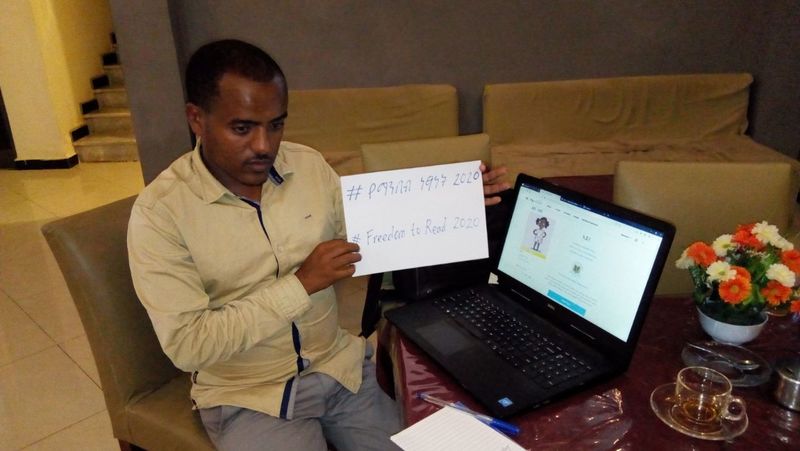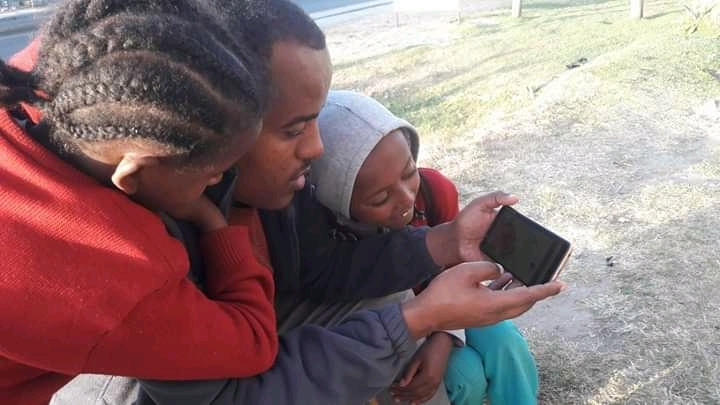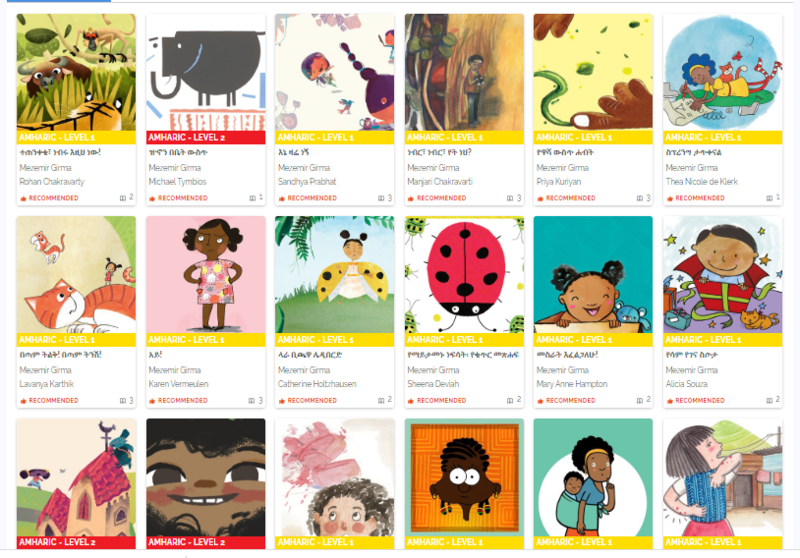#FreedomtoRead2020: Mezemir Girma from Ras Abebe Aregay Library, Ethiopia, on single-handedly building a digital library in Amharic
Posted by Remya Padmadas on February 21, 2020
Ras Abebe Aregay Library is a library based in Debre Birhan, Ethiopia. They host storybook writing workshops for children. In the past, they have collaborated with the African Storybook Initiative to host workshops and get more storybooks written and translated. They distribute digital storybooks to agencies and regional bureaus of education and are able to reach children in Ethiopia through their network of schools, parents and NGOs across the country.
In this email interview, Mezemir Girma, General Manager of Ras Abebe Aregay Library tells us about his #FreedomToRead experience, and the process of creating a digital library of 40 storybooks in Amharic.
Do tell us about the Ras Abebe Aregay Library, its vision, and the communities that you engage with.
Ras Abebe Aregay Library envisions creating a generation of readers in Ethiopia. We engage with the community in Debre Birhan town, Amhara National Regional State through our library. Our involvement in making learning materials and knowledge accessible online to the wider Ethiopian community results in our library serving more people in Ethiopia.
What are the long-term effects of a lack of easy access to resources in mother tongue languages for the communities that you work with?
In Ethiopia, there is a shortage of storybooks, as well as textbooks. The lack of easy access to resources in mother tongue languages for Ethiopian students perpetuates the vicious circle of illiteracy and poverty.
How did you come across StoryWeaver and the Freedom to Read campaign? What prompted you to participate in the campaign?
Our library took part in an African Library and Information Associations and Institutions (AfLIA) meeting in Accra in October 2019. At that event, we spoke to the participants about the African Storybook Initiative. A representative from Uganda asked if that was like StoryWeaver. That was the first time we heard about StoryWeaver. Later, we visited the StoryWeaver website and followed them on social media. Then, on Twitter we learned about the Freedom to Read campaign. We applied to translate storybooks to Amharic. After the selection process, our library was among the six organizations chosen globally to take part in the translation project.
What are the benefits of creating a local digital library of joyful storybooks in Amharic?
As we are working on reading and literacy, we understand how storybooks are helpful to children in our communities. When one gets the opportunity to translate quality picture storybooks into one’s mother tongue, one should not miss the opportunity. As we wish to help this generation get better opportunities than ours, we seized this opportunity and took StoryWeaver‘s online training via Skype.
Local digital storybooks in Amharic are helpful as there is a shortage of storybooks in the country. As a lecturer in English Literature at one of the public universities in Ethiopia, I was not aware of storybooks until 2014 when an American Peace Corps Volunteer, Benjamin Rearick, introduced me to the African Storybook Initiative (ASb) and their wonderful translation system. By the way, I felt really happy when I found the storybooks I translated for ASb on the StoryWeaver website. Therefore, in a country where children have little access to storybooks, the role that the translation project may have is beyond words.
Tell us a bit about your process of translation. Were there any challenges you faced while translating to Amharic?
The translation process was a bit challenging. At first, our plan was to engage library readers and volunteers in the activity. However, they found it hard to get time to involve themselves in the translation project. Therefore, being the manager of the library, it was up to me to work on the translation. The translation was a bit difficult because I was not familiar with the website. It took me a while to get used to it. The online training helped me. The number of holidays that Ethiopia celebrated in the last few weeks kept me away from the university where I could get internet connection. As much as possible I used the time I had to translate. After I went half way, I learned that I could use Google Translate. Earlier I didn’t rely on google’s Amharic translation system as I heard people say it is inaccurate. Now I am using it even if their Amharic translation requires more editing work.
How do you hope to reach more children through your books in Amharic?
Once the translation is over, distribution is another challenge. As I know from experience, the community lacks access to the internet. At our library, we will display the storybooks to children using our projector and laptop. We will also download and disseminate in nearby schools. Other areas of the country could be reached with social media and regional education bureaus.
The logo of our library was designed by our IT volunteer Mr Tesfamicael Hailu and we would love to thank him as he filled that gap and helped our library appear on the storybooks we translate!
Thank you everyone at StoryWeaver for the opportunity you gave us!

Mezemir Girma from Ras Abebe Aregay Library, Ethiopia

Mezemir Girma conducts reads a storybook in Amharic with children in Ethiopia

Storybooks translated by Ras Abebe Aregay Library into Amharic on StoryWeaver
Thank you, Ras Abebe Aregay Library, for giving children the #FreedomToRead in Amharic!
You can read all the storybooks translated by Ras Abebe Aregay Library here.
Learn more about the organisation and their work here.
Do join the conversation by leaving your thoughts in the comments section below. You can also reach out to us through our social media channels: Facebook, Twitter and Instagram.